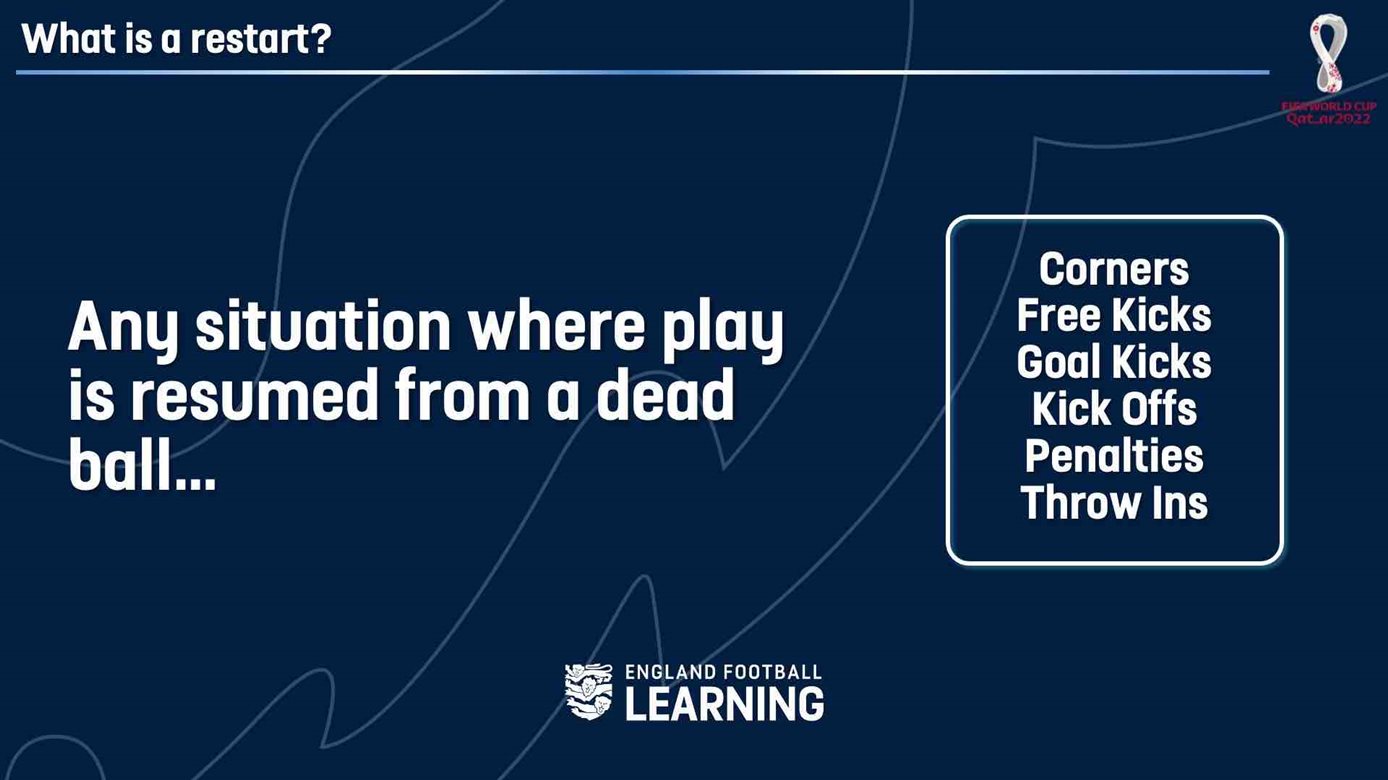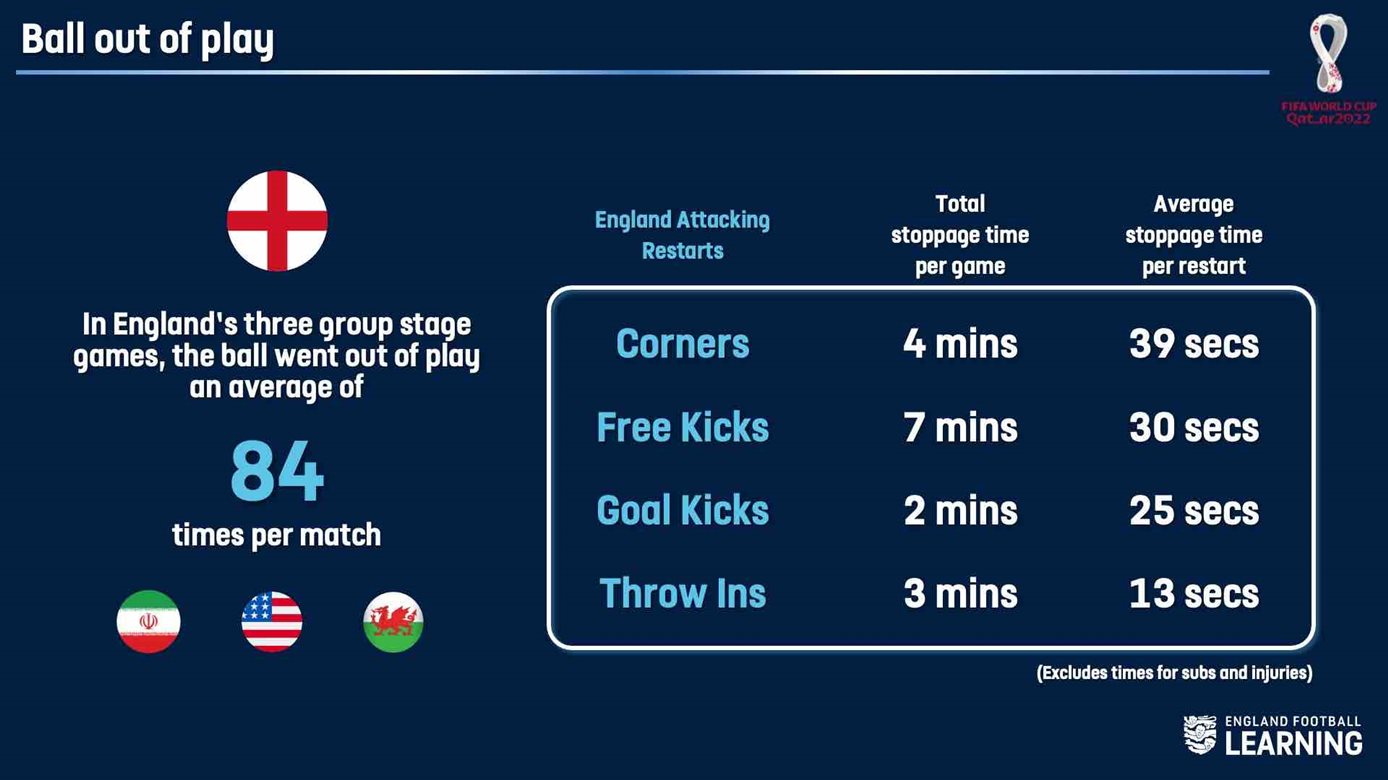The concept of ‘ball in play’ time has risen to prominence in the last few years and the football world has begun to ask itself, just how long is a game of football?
As the name suggests ball in play time is the accumulated amount of time the ball is active within a game of football, with all stoppages removed. During the Men’s World Cup, commentators and pundits frequently remarked about the amount of time that was being added on to the end of each half to increase the amount of football we had to enjoy. Did this work? Let's explores the numbers…
Below are the averages for the games without extra time across the tournament.

The graphic above show that officials were able to add, on average an extra twelve minutes, bringing the average game time up to 102 minutes. The average premier league game is 97 minutes in length, so the 2022 World Cup games were 5 minutes longer, but with the Premier League average ball in play % also being 57% it meant that there was only an extra 2 mins of actual ball in play time.
Whether we play 90 minutes or a shorter version of the game it’s important to realise just how much the ball is out of play. Do we disregard that time in between play because there’s nothing to see, or is it the most effective time to influence what happens next?
Restarts have traditionally been known as ‘set plays’ or ‘set pieces’ and with corners and attacking half free kicks being the most practiced examples due to their proximity to the goal and the common objective of trying to score as a direct result, but what other ‘restarts’ are key within games?

We took a closer look at some of the restarts during England’s three group stages matches to see just how long they spent preparing to take their in possession ‘attacking’ restarts.

We can see above that England spent on average, a total of 4 minutes per game preparing to take their corners and that the average stoppage per corner was 39 seconds. We’ve excluded the time for subs and injuries so it leads us consider what is happening in those 39 seconds? What messages can be delivered on to the pitch clearly in that time? And lastly, what implications this has on practice design. Of course, restarts are a great way to slow the game down or speed a game up, but if we look at the average time it takes to take a goal kick or a throw in, are these being replicated within training to allow players suitable breaks to make decisions?


